Sean Moran’s High Hopes Roadhouse, Bilpin NSW
With his second restaurant, in a picturesque village that needed a change of fortune, Sean Moran has found a new contentment.
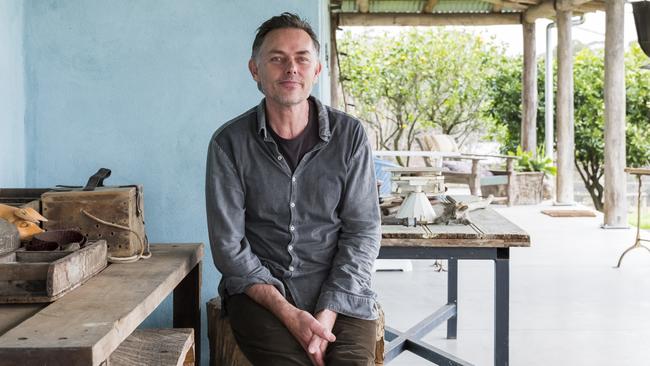
A tea towel that has pride of place in chef Sean Moran’s quirky kitchen in his quirky house in the quirky Blue Mountains town of Bilpin daringly proclaims: “I Can See Clearly Now The Trees Have Gone”. In this part of the world, however, the humour might be lost on some. It was a gift from friends who live in nearby Mount Tomah and whose house was destroyed in the bushfires of last summer that tore through this idyllic part of NSW.
The weird thing is that the tea towel is right – you really can see clearly now. The rock formations of the area, normally hidden by the dense bush, are suddenly visible. It’s an eerie, otherworldly landscape. New green growth is well and truly coming through, but the blackened tree stumps and scorched earth are a reminder of the destruction that occurred here 12 months ago when the massive Gospers Mountain fire turned towards the town. Moran, with his trademark sunny disposition, however, points out the tea towel and says, “Isn’t it hilarious?”
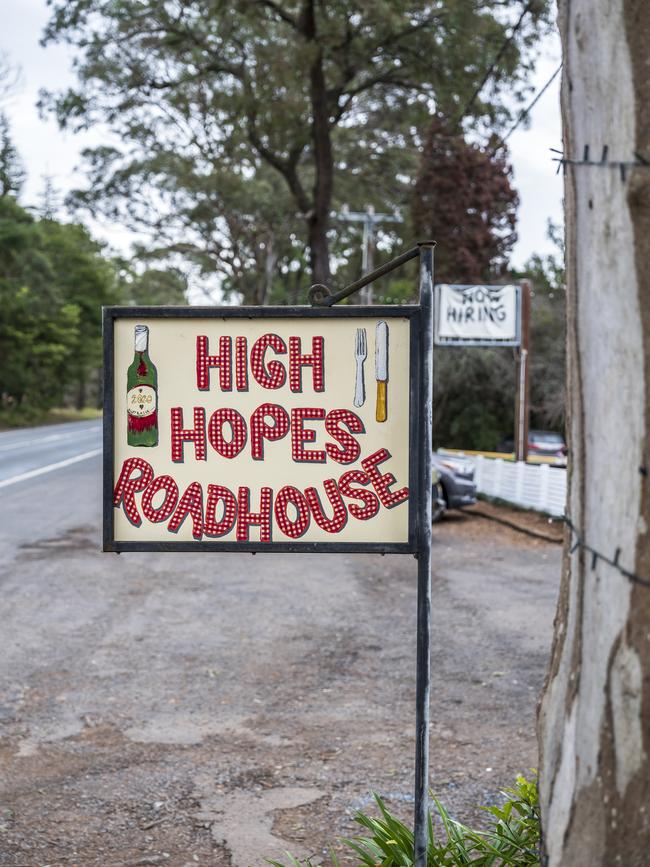
It’s part of his success in the notoriously cut-throat restaurant business that Moran can joke in the face of adversity and hardship and look for the silver lining in a bad situation. After 27 years at the same location in Bondi Beach, he and his partner Michael Robertson decided to open a second restaurant, this time closer to their home in Bilpin. They did it just a few months after the bushfires and in the middle of COVID-19 restrictions, and decided to call it High Hopes Roadhouse.
“I was going to hang the tea towel in High Hopes but I thought it might be too much,” says Moran. The friends who gave it to him and who lost their house, have their primary residence elsewhere. And while the fires came close to Moran’s property it was untouched, so they can afford to laugh a little as a way of coping and to relieve the stress from what they have been through. But houses, businesses and lives were destroyed by the fires and Moran is all too aware that some people might not be ready for his brand of wit.
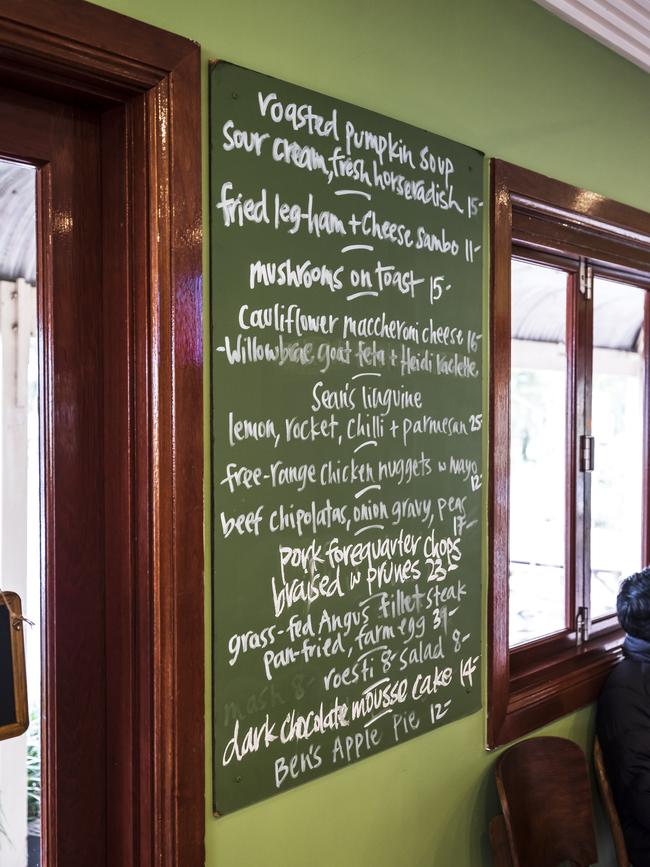
Which is exactly why he decided to call his new business venture High Hopes. “Funnily enough, someone – one of the local garden club members – said she wasn’t sure about the name and that it might have the wrong connotation [in its use of the word high],” Moran recalls, laughing. “I knew exactly what she was getting at and so I said – all innocent – what do mean about the name? It’s about the bushfires and COVID and that we need to have some positivity around here! And she said, you’re right, we all need some uplifting.”
The High Hopes Roadhouse is pure Sean Moran. It’s bright and colourful, with an eclectic and homey fitout of wooden tables and chairs salvaged from secondhand stores, Art Deco light fittings and a newly installed fireplace. Like his famous Bondi restaurant, it’s an interior that wasn’t “designed” – it was just put together by Moran and Robertson in their unique style. Out the back of the store is a nostalgic old-school sweet shop. “Just for a bit of fun, even though it goes against my whole slow food thinking,” he says. The place was conceived to be not “too restauranty”, says Moran, and the menu is full of relaxed classics such as fried leg-ham and cheese toasted sandwiches; free range chicken nuggets; beef chipolatas, onion gravy and peas and Moran’s signature lemon, rocket, chilli and parmesan linguine, with much of the produce coming from Moran and Robertson’s own farm a kilometre away. Then there’s the apple pie and ice-cream and a dark chocolate mousse cake for dessert.
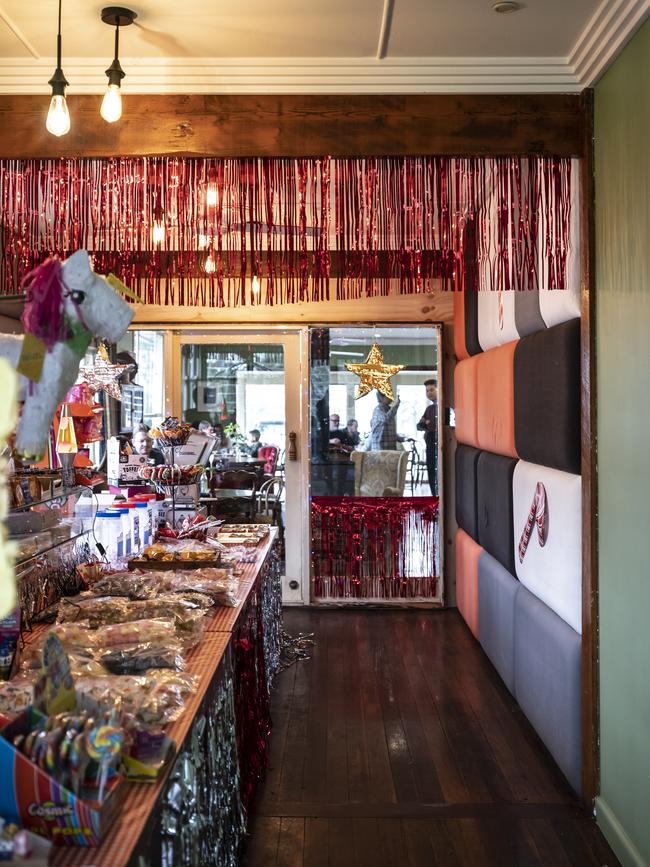
“I was actually against the idea of opening another restaurant,” says Moran. “But I knew the community needed something that wasn’t a ‘restaurant’ and not wood-fired pizza place again either. They needed something where they could go and have a meeting and a cup of tea or something really homey and affordable, and for it to be a meeting point.” At the moment High Hopes is open seven days for breakfast and lunch, and there are plans to open a couple of nights a week in the future.
This year has also been a trying one for Moran’s Bondi Beach restaurant, Sean’s Panaroma, as it has been for the entire hospitality industry. At one point, Moran says, it looked like the famous restaurant across the road from the north end of the beach might have to close after nearly three decades of continuous trade. Moran opened the 45-seat restaurant in 1993 in a tiny wedge-shaped space between two apartment buildings on Campbell Parade, and it won instant praise from critics and diners alike. The menu is as compact as its dining room – there are four entrees, four mains and four desserts and that’s it.
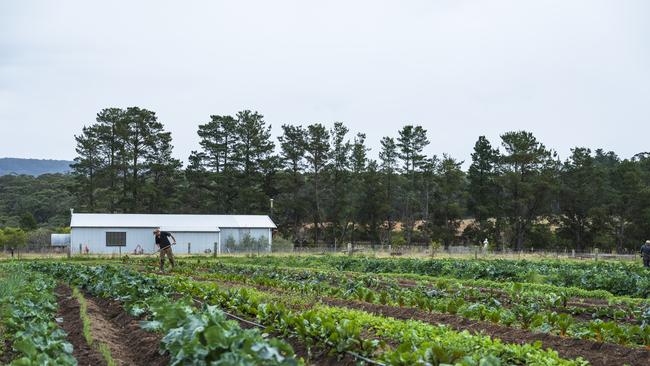
The focus at Sean’s, as the restaurant is affectionately known, is on simple food made with the best ingredients and, like High Hopes, a significant number of them come from Moran’s own farm in Bilpin. The Australian’s restaurant critic, John Lethlean, wrote in a 2017 review that “Sean’s has always been ahead of the pack, sourcing unique farm produce and small supplier ingredients decades before it became a thing. Being small made that possible. And it helps explain the longevity of this quirky, much-loved restaurant. Sean’s has stayed true to a mission statement: comforting home-style food balanced with modern tastes.”
But being a small venue meant that the restaurant couldn’t operate when coronavirus gathering restrictions were at their strictest, and it was closed for several months. But the bills, specifically the rent, kept piling up and Moran says the prospect of owing his landlord months of back rent was too daunting for him to consider.
“I’m at a point in my life when I don’t want to have a huge debt hanging over me, so we were prepared to walk away,” says Moran. “We really thought it might be the end, which would have been a sad way to end it after all these years.” Ultimately he came to an arrangement with his landlord, with the latter perhaps realising that (a) Bondi without Sean’s wouldn’t be Bondi and (b) few restaurateurs could make such a success of such a small and unusual space. But being an iconic part of the Bondi landscape is a blessing and a curse, says Moran.
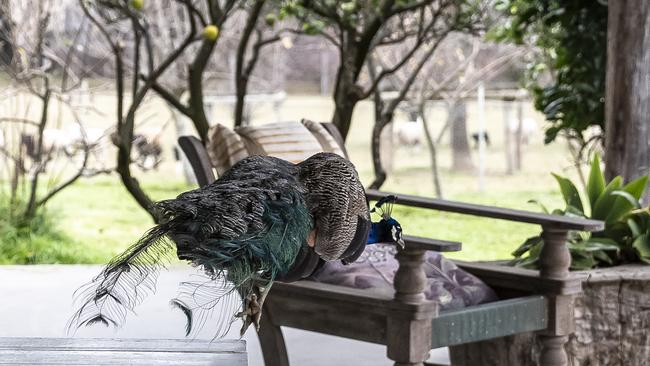
“Over the years I’ve sometimes struggled with having my name above the door,” he says, “People come and you’re not there and then they say, ‘oh it’s never as good when you’re not there’. And it’s like a backhanded compliment. They just want you. They want to be recognised and I get it, I understand that, especially if you’re bold enough to put your name above the door. Who is this guy, anyway? You need to follow through with that and I get it. You need to be there to give it and the staff and the customers they love they need.
Moran, 56, grew up in Sydney’s Sutherland Shire and moved to Darlinghurst when he was 17 to work at the award-winning Bon Cafard restaurant under the tutelage of chef Martin Teplitzky, who got his training at the legendary Berowra Waters Inn. It was at Bon Cafard that Moran says he learned a restaurant could be successful playing by its own rules. “Bon Cafard was really hip and cheeky,” he says. “They used to play punk rock and had Linda Jackson tablecloths – it was just so cool. We used to do six entrees, six mains and six desserts, and we’d go to the baker on the way in to work, then go to the fish markets, then to the butcher, and then we’d come back and make up a menu and cook it all and the next day do it all again. It was so great and so unique and bold and confident. And at the time all the other restaurants in Sydney were doing fancy try-hard food and it was kind of reassuring that you could be independent and be yourself and do your own thing.”
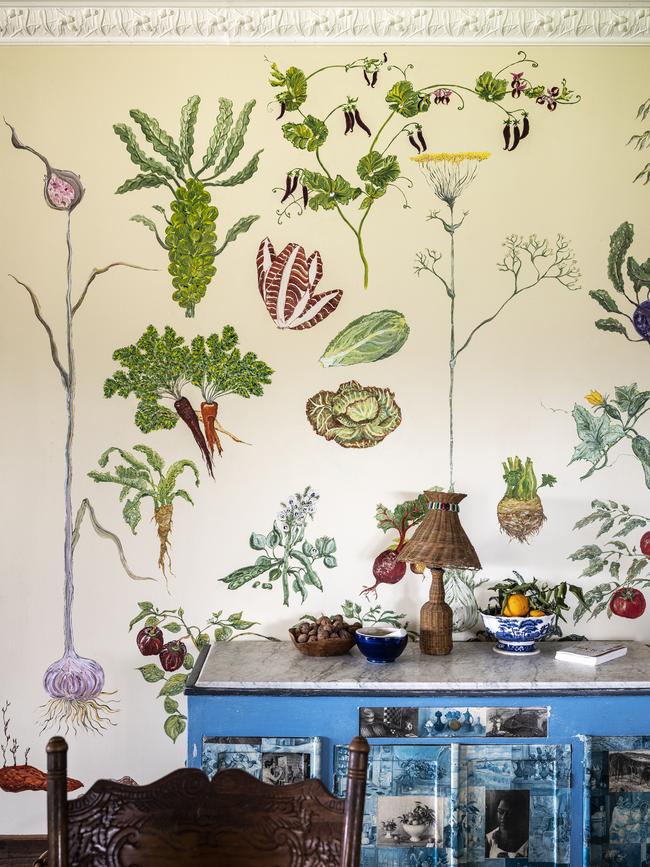
Which is exactly what Moran has done with his namesake Bondi restaurant, but if you ask him why he thinks it has been so successful for nearly three decades, he rolls his eyes and his face transforms. He looks exhausted. “There have been a couple of times when I thought it was time to close it,” he says. “There was one year when we made $4000 profit for the entire year and Manoo [his name for Robertson] and I looked at each other and thought, what the f*** are we doing? But it gives me this life, it gives me so much, and I love the room and I love the social aspect and I love the clientele and I love the adrenalin of the industry and I love the connection to having a bit of an outlet for it all. I also love that after all this time it’s still got relevance and it’s not about something shiny and new, which is very much a Sydney thing. It’s about something old and something with history and something with weight to it, just by being real and pure and simple.”
In many ways Moran has made a virtue of a difficult situation – the Bondi restaurant’s awkward site. “The best word I can use to describe the room is haphazard,” he says. “It was never ‘designed’, and it’s an ongoing work in progress and there is still more to do. It’s a really tight little space and it can be frustrating and it can drive you nuts, but I think there is scope there for maybe moving the kitchen out into the back area and maybe making the main dining room bigger and maybe having an entrance that’s wind proof, because when that southerly comes and it’s cold we have to send people around the back to get into the restaurant, so there is all that to consider. You’ve constantly got to love it and you’ve got to always be giving it a bit of a tweak here and there.”
COVID-19’s social distancing requirements for restaurants have been a challenge for smaller venues, but Moran has made a virtue of the tight restrictions. With a reduced capacity of 12 people, he introduced a fixed-price set menu. It means the restaurant knows the minimum amount of money it will make each night and can minimise food wastage. “It’s become a bit of a machine, which is an unfortunate way to think about it, but it needs to be that at the moment. And we’ve been thinking, why don’t we keep doing it this way in the future? Restaurants have started to realise we can play by our own rules in a way and we will have to in order to be able to sustain a business.”
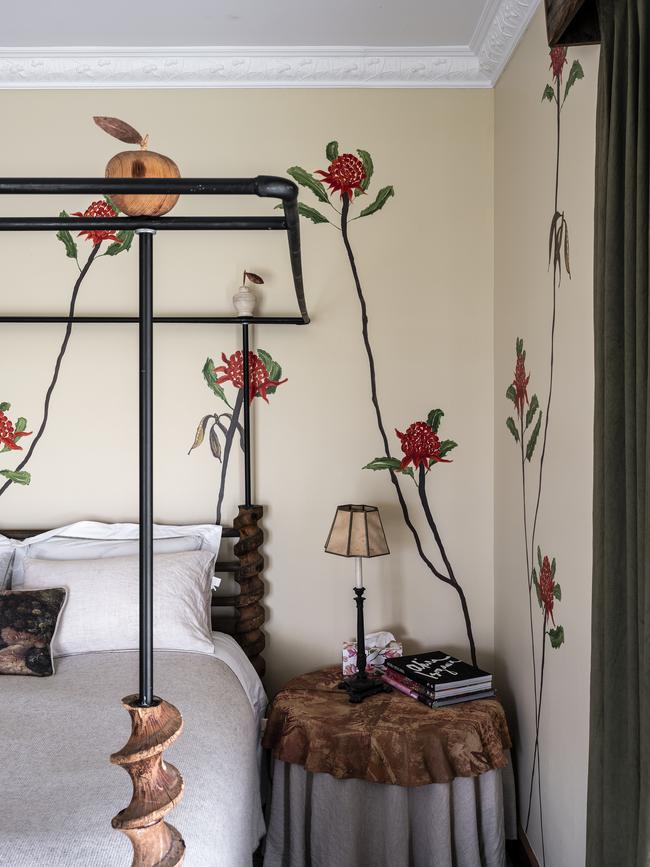
For Mother’s Day this year Moran only did a take-away service with just one option: a roast chicken with all the trimmings that had to be booked in advance and collected from the restaurant. They sold almost 150 of them. “We could never fit that many people in here for a Mother’s Day service and I think we should do that every Mother’s Day,” he says.
Back in his home kitchen in Bilpin, he is keen to talk about what he calls his COVID therapy. He spent the months of not going back and forth from the Blue Mountains to Bondi doing something he’d been thinking about for ages but never had time for – he painted vegetables on the walls of the kitchen and dining area. “It’s not finished yet; there are lots of gaps and I need to fill it up a bit more. It’s all stuff we grow here and that works here. I think it’s got real kapow!” he laughs. In the main bedroom, Moran painted waratahs on the walls. Then there’s the garden and animals (cows, chickens, cats, dogs, peacocks) to attend to. Moran has clearly enjoyed his break from the day-to-day running of his restaurant and has spent time thinking about the next stage of his life.
“I said to Manoo, we’re meant to be making life simpler; we haven’t had a day off since we opened High Hopes,” he says. “But he says he’s never felt so alive and it’s really great for him, so I’m just behind him in it and getting it running as a business that can work.
“Sometimes I think Bondi may have got to a point where it’s grown as much as I can give it and it might be time to hand the baton to my nephew, who is the chef down there, and just let the next generation take it on. We’ve got to be realistic; we need to get our life back, but I don’t know what else we would be doing if we stopped. I’ve done it since I left school. I don’t know anything else. I love it in a kooky way.”


To join the conversation, please log in. Don't have an account? Register
Join the conversation, you are commenting as Logout